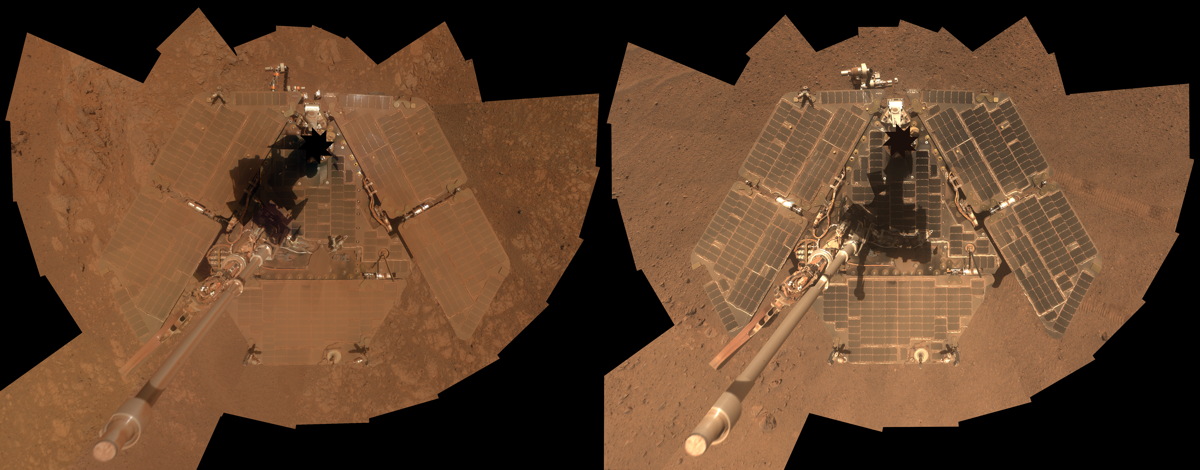Opportunity: The Amazing Self-Cleaning Mars Rover (Photos)

Opportunity has been given a new lease on life after the Red Planet gave the tenacious Mars rover a power-boosting spring clean.
When NASA engineers envisaged the mission of Mars rovers Spirit and Opportunity, they were, in hindsight, fairly pessimistic about their mission duration. From landing in 2004, the twin robots were expected to have a mission duration of only three months, and one of the key threats to their survival would be dust sticking to the rovers’ solar panels. And the dust sure did stick.
But in true Mars style, there were some surprises.
PHOTOS: 10 Years On Mars: Opportunity’s First Sols
Although dust storms can quickly choke the whole planet, strong winds and helpful dust devils have countered the impact of sun-blocking layers of dust settling on the solar-powered robots. Most recently, Opportunity has seen a surge in energy after a "cleaning event" in March, resulting in a power boost of 70 percent when compared with power levels at the start of this year.
And now mission scientists have released a self-portrait photo of the Mars rover. When compared with the dust coverage at its worst, the difference is nothing short of dramatic. Having just survived its sixth Mars winter, after the most recent cleaning event, Opportunity has solar panels that are as dust free as they were before it entered its first Mars winter.
NEWS: Rover Opportunity Celebrates Mars Spring Power Boost
Get the Space.com Newsletter
Breaking space news, the latest updates on rocket launches, skywatching events and more!

Sister rover Spirit was not able to soldier on for as long as Opportunity, but it wasn’t dust covering its solar panels that killed off the six-wheeled robot. In 2010, NASA called off attempts at contacting the rover after Spirit became stuck in a sand trap at Gusev Crater. Before Spirit was lost, it also experienced numerous cleaning events that extending the mission’s life years beyond its three-month warranty.
So Opportunity carries on, doing mindblowing science at "Murray Ridge" on the edge of Endeavour Crater, uncovering new insights to Mars' ancient environment. And it seems that Mars is helping it along with each new gust of wind.
This article was provided by Discovery News.
Join our Space Forums to keep talking space on the latest missions, night sky and more! And if you have a news tip, correction or comment, let us know at: community@space.com.
Ian O'Neill is a media relations specialist at NASA's Jet Propulsion Laboratory (JPL) in Southern California. Prior to joining JPL, he served as editor for the Astronomical Society of the Pacific‘s Mercury magazine and Mercury Online and contributed articles to a number of other publications, including Space.com, Space.com, Live Science, HISTORY.com, Scientific American. Ian holds a Ph.D in solar physics and a master's degree in planetary and space physics.









